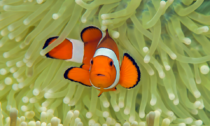
The charismatic clownfish – made famous by the popular film Finding Nemo – is a treasure trove for biological research, helping scientists answer a myriad of biological questions, such as how larvae disperse in the open oceans, or how coral reef fish will react to changes induced by global warming. While a comprehensive genome of the orange clownfish – the original Nemo – was published a few years ago, only recently did scientists manage to sequence the genome of the false clownfish (Amphiprion ocellaris) too, a related species found around Okinawa, the Philippines, Southeast Asia, and northwestern Australia.
“This genome, which is like the blueprint of the false clownfish, will be a very useful resource for scientists across biological fields,” said study co-lead author Dr...
Read More



Social Profiles